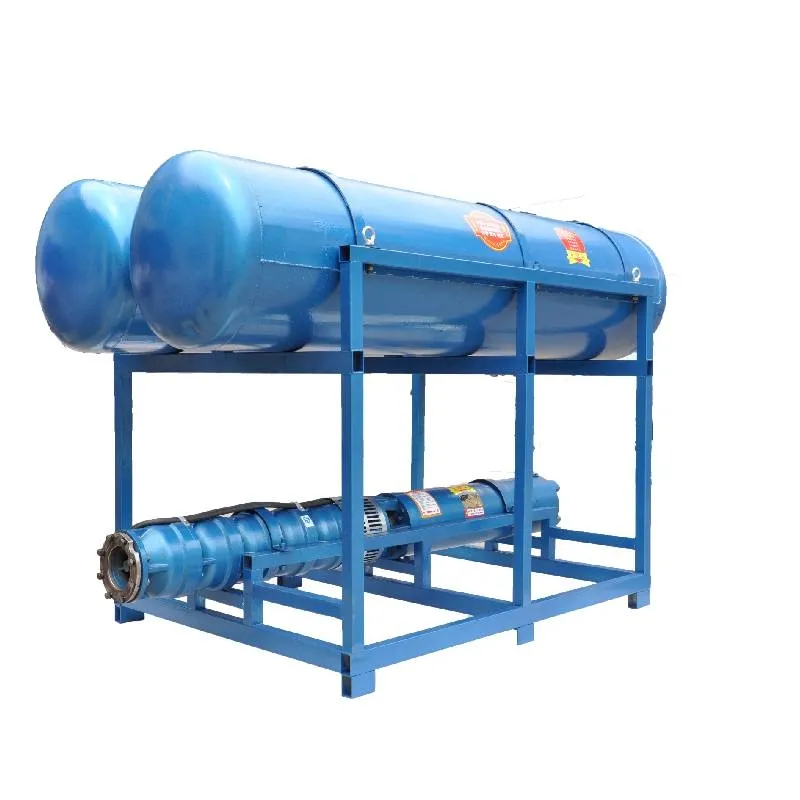Dis . 03, 2024 16:19 Back to list
how to test a submersible well pump
How to Test a Submersible Well Pump
Testing a submersible well pump is essential to ensure its proper functionality and efficiency. Proper testing not only confirms that the pump is operating as intended but also helps identify any potential issues that may need addressing. Here’s a comprehensive guide on how to test a submersible well pump effectively.
1. Preparation for Testing
Before starting the testing process, gather the necessary tools and equipment
- A voltmeter or multimeter - A flow rate measuring device - A pressure gauge - Safety gear (gloves, goggles) - A water level measuring device
Ensure you have a clear understanding of the pump's specifications and the expected performance parameters outlined in the manufacturer’s manual. This knowledge will help you compare the current performance to the expected values.
2. Visual Inspection
Begin with a thorough visual inspection of the well head and the pump system. Look for any signs of wear or damage, such as
- Cracks or corrosion in pipes - Leaks at connections - Frayed or damaged electrical cords
Address any visible issues before proceeding to functional testing, as these could significantly impact the pump's performance or pose safety hazards
.3. Check Electrical Components
Using a voltmeter, check the electrical supply to the pump. Ensure that the voltage matches the specifications provided by the manufacturer. If the voltage is low or fluctuates significantly, it may indicate issues with the power supply or electrical connections.
Additionally, inspect the pump’s control box and float switch (if applicable) for proper operation. A faulty float switch can cause the pump to either run continuously or not run at all, which can damage the pump over time.
how to test a submersible well pump

4. Measure Water Levels
Using the water level measuring device, determine the static water level in the well and compare it to the dynamic water level once the pump is operating. The dynamic water level usually drops when the pump is in operation. This drop should not exceed the recommended guidelines specified by the pump manufacturer.
5. Flow Rate Testing
To measure the flow rate, direct the water discharge from the well into a container or measuring device. Start the pump and allow it to run for a specific period, usually several minutes. Record the volume of water pumped during this time and calculate the flow rate in gallons per minute (GPM). Compare the measured flow rate to the expected flow rate specified by the manufacturer.
If the flow rate is significantly lower than expected, it may indicate problems such as
- Clogged filters or screens - Impeller damage - Insufficient power supply
6. Pressure Testing
Next, attach a pressure gauge to the discharge side of the pump. A properly functioning submersible pump should maintain the pressure within the specified range. Again, compare the recorded pressure with the manufacturer’s specifications. If the pressure is too high or too low, it may suggest issues with the pump's performance or the well itself.
7. Final Assessment
After completing these tests, compile your findings to assess the overall performance of the submersible well pump. If any parameters fall outside expected ranges, further investigation may be necessary. Consider consulting a professional if you're unsure about any results or if the pump requires repairs.
Conclusion
Regular testing of a submersible well pump is crucial for maintaining water supply efficiency. Through systematic preparation, careful inspection, and thorough testing of electrical components, water levels, flow rates, and pressure, you can ensure that your pump remains in optimal condition. By performing these tests, you can catch potential problems early and avoid costly repairs or replacements in the long run.
-
Submersible Well Pumps Buying Guide
NewsMay.14,2025
-
Submersible Sump, Dirty Water, Borehole Pumps Demystified
NewsMay.14,2025
-
Stainless Steel Submersible Pumps Superior Performance
NewsMay.14,2025
-
High Flow Submersible Well Pumps Essential Features
NewsMay.14,2025
-
Choosing the Best Stainless Well Pump
NewsMay.14,2025
-
A Comparison of Submersible Pumps Filled with Water and Oil
NewsMay.14,2025
-
 Submersible Well Pumps Buying GuideReliable access to clean water is fundamental for residential, agricultural, and commercial operations, making the selection of an appropriate well pump system one of the most important infrastructure decisions.Detail
Submersible Well Pumps Buying GuideReliable access to clean water is fundamental for residential, agricultural, and commercial operations, making the selection of an appropriate well pump system one of the most important infrastructure decisions.Detail -
 Submersible Sump, Dirty Water, Borehole Pumps DemystifiedThe world of water management has undergone a technological revolution, with advanced pumping systems now offering unprecedented efficiency and reliability across diverse applications.Detail
Submersible Sump, Dirty Water, Borehole Pumps DemystifiedThe world of water management has undergone a technological revolution, with advanced pumping systems now offering unprecedented efficiency and reliability across diverse applications.Detail -
 Stainless Steel Submersible Pumps Superior PerformanceModern water extraction and fluid handling systems demand equipment capable of withstanding harsh environments while maintaining peak efficiency.Detail
Stainless Steel Submersible Pumps Superior PerformanceModern water extraction and fluid handling systems demand equipment capable of withstanding harsh environments while maintaining peak efficiency.Detail
